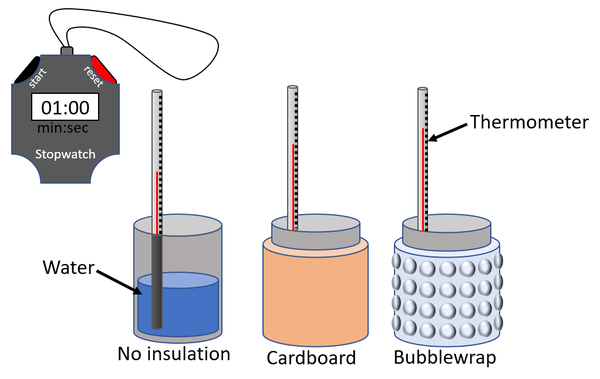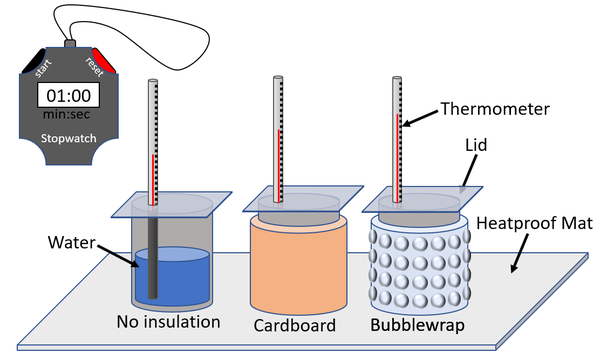GCSE Physics Required Practical: Investigating Thermal Insulators
Contents
Key Stage 4
Meaning
Investigate the effectiveness of different thermal insulators on reducing an energy transfer by heating.
Experiment
Variables
- Independent Variable: Insulating material.
- Dependent Variable: The temperature decrease of water after a given time.
- Control Variables: The volume of water used. The initial temperature of the water. The time taken between measurements. Thickness of the insulating material.
Method
| A diagram of the apparatus used in an experiment to compare the effectiveness of different thermal insulators. |
- Measure 100ml of hot water (around 50°C) using a measuring cylinder.
- Fill a can with hot water
- Place a thermometer in the water and wait until the temperature reaches 40°C.
- Begin a stopwatch when the temperature is 40°C then read the temperature every 30 seconds for 5 minutes.
- Repeat steps 1-3 with a can covered each type of insulating material.
- Plot a graph with temperature on the y-axis and time on the x-axis plotting the results for each insulating material on the same graph.
Improving Accuracy
- Place the cans on a heatproof mat to reduce the thermal energy lost to the table surface by conduction.
- Place a lid over the cans to reduce the thermal energy lost to the air by evaporation.
- Complete the experiments with different insulators simultaneously so that a change in the temperature of the laboratory does not affect the results.
- Place the measuring cylinder on a flat, level surface and read it from eye level to get an accurate reading of the volume of water.
| A diagram including apparatus used improve the accuracy of an experiment to compare the effectiveness of different thermal insulators. |
Improving Precision
- Use a thermometer with a higher resolution.
- Use a data logger rather than a thermometer.

